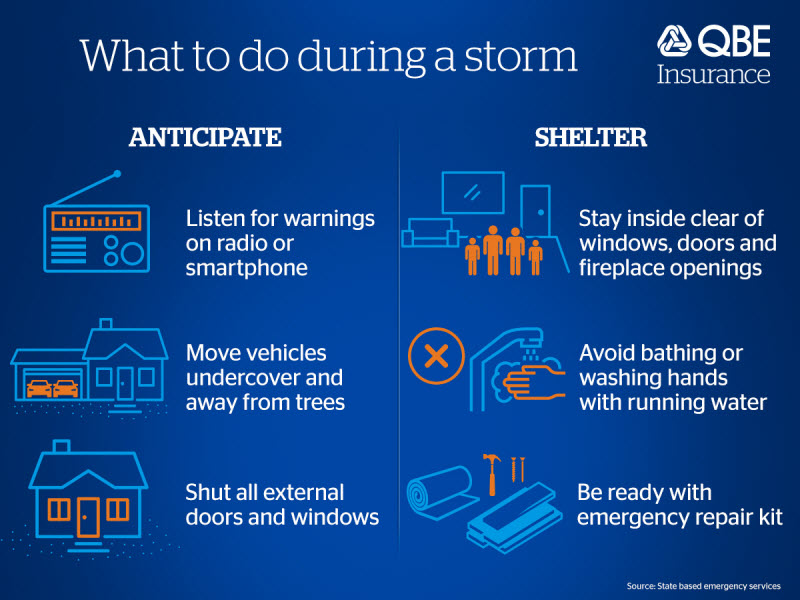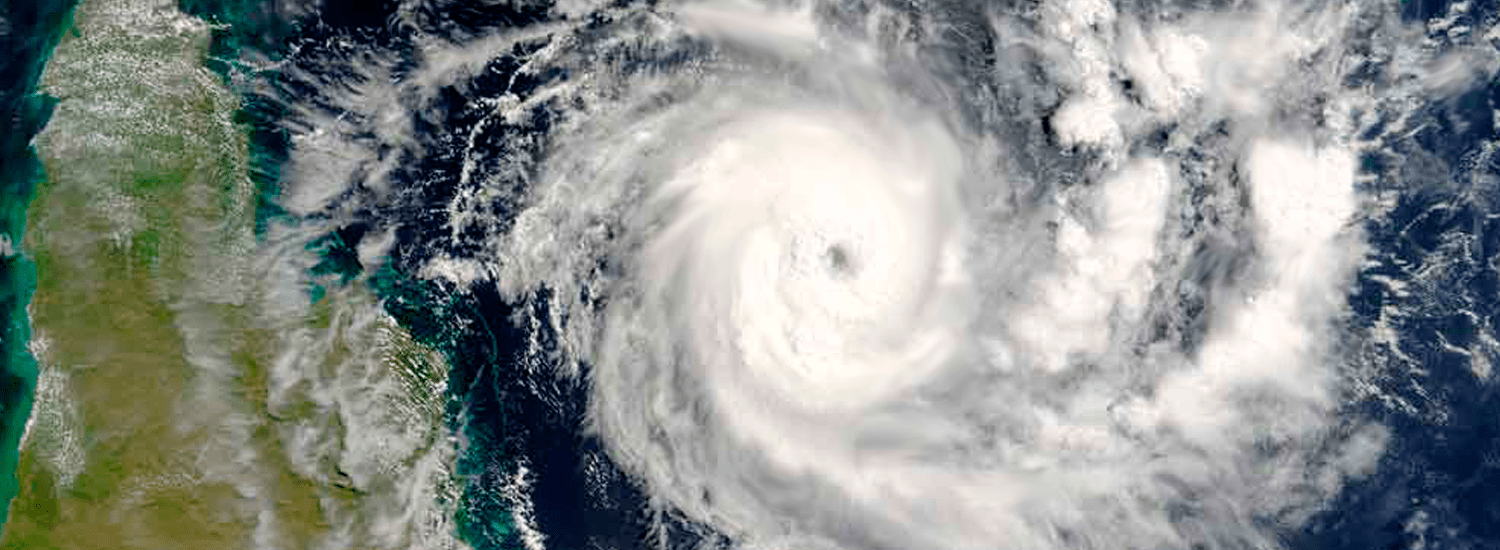Storm safety: what to do during a severe storm
This article was originally published in March 2017 and was updated in October 2021.
- Severe storms can build in just 10 to 20 minutes so it pays to plan ahead and know the steps you’ll take to stay safe
- Shelter indoors in the strongest part of your home, away from doors, windows and skylights
- Monitor weather conditions, and only evacuate if it’s safe to do so – never drive through floodwaters.
Storms can hit quickly and with surprising ferocity, so it’s important to know what to do during a storm. Following a few clear procedures can help keep you, your family, and your property safe.
Here are our safety tips to follow from the time a storm warning is issued, right through to knowing when to evacuate.
Monitor severe storm warnings
A key step is staying up to date with weather warnings. The website of the Bureau of Meteorology (BOM) plus State Emergency Services provide storm warnings. Following both on social media can help you track any approaching storms.
Weather apps are another handy tool. Consider downloading the BOM app, Weatherzone app plus the SES app for your state/territory to know how the weather is shaping up. Local radio stations are another handy source of weather updates.
Storm warnings will outline the sort of conditions you can expect including hail, heavy rain, flash flooding or strong winds. Keep in mind, you may only have a short time to act during a severe storm. Under the right conditions, damaging thunderstorms can form in as little as 20 minutes, so you may need to prepare fast. And when time is limited, it’s important to focus on the steps that offer maximum protection.
Decide where to shelter in a severe storm
Ideally you will have already done some storm preparation, with outdoor items secured, cars parked safely undercover, and pets taken inside. A crucial factor in staying safe is deciding where you and your family will shelter.
State-based emergency services recommend staying indoors and keeping away from windows, doors and skylights in case of flying debris. Decide which room is the strongest part of the house – this is usually the smallest room with the fewest windows.
The bathroom may seem like a safe place but the BOM says to avoid touching brick or concrete, or standing barefoot on concrete or tiled floors as lightning can travel through metal wires or bars in concrete walls or flooring.
Electrical charges also conduct through water so it’s best not to take a shower, enter water outdoors (including swimming pools) or touch metal objects during a thunderstorm.
Avoid electrical appliances
While the storm is passing overhead, avoid using electrical equipment connected to mains power as well as landline phones and modems. Lightning strikes kill 5-10 people in Australia each year, but over 100 people experience injuries from lightning, and the vast majority of injuries result from using landline phones during thunderstorms.
If you are caught outside during a severe storm
If you are outdoors during a severe storm, take shelter away from drains, gutters, creeks and waterways, and head to safety as soon as it’s safe to do so.
Your car is a good place to take refuge if you’re stuck outside during a severe storm. Pull over onto the side of the road, turn your headlights on so your vehicle can be seen and keep the windows closed. Never drive through floodwaters.
Check the BOM website or your weather apps and listen to your local radio station for storm warnings and updates.
Stay or leave in a storm? Decide early
If warnings have been issued for flash flooding and your home is in a low-lying area, evacuating before the storm hits may be the most sensible option but only if it’s safe to do so.
If you plan to evacuate, contact your local emergency services about the nearest evacuation centre, and let family or neighbours know where you plan to go. Take your pets and emergency kit with you to higher ground. Importantly, think about the safest routes to avoid waterways.
If you cannot evacuate, or you don’t feel it’s safe to leave, keep your family calm until the storm passes. Then move to the highest part of your home before calling either 000 or 132 500 for your state-based emergency service.











